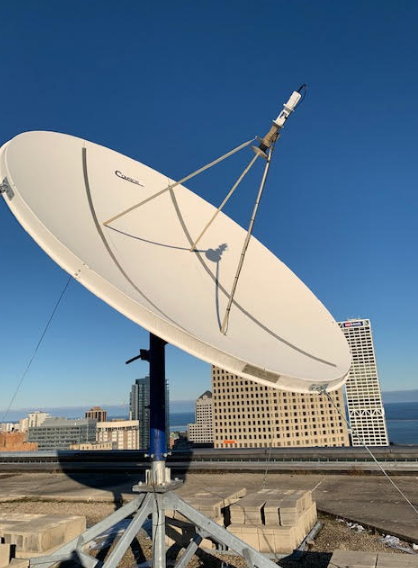Directional couplers offer wider bandwidths and lower insertion loss, while magic tees provide better phase and amplitude balance.
Technical Differences
Where they excel
Directional couplers and magic tees are essential components of RF and microwave systems, and both serve valuable application-specific functions. As the name implies, a directional coupler typically consists of two closely coupled transmission lines carefully designed to transfer energy. Their ability to split or combine signals while allowing only minimal energy to flow in the opposite direction makes them ideally suited for these purposes. Magic tees are capable of acting as power dividers or combiners due to their integration of hybrid junctions, and they are a vital component of balanced mixers and phase array antennas.
Key Difference: The most fundamental difference is the mechanism of operation, with signal flow in only one direction being the preference of directional couplers, and their cross-sectional structure allowing signal manipulation in multiple planes by tees. This foundational difference divides their utility in equipment requiring particular signal closeness and routing characteristics.
What frequency and bandwidth they operate
Unmatched by other RF components, both have an operating frequency range. Magic tees, however, operate within a fixed narrowband, whereas the frequency and, consequently, bandwidth of the latter vary greatly depending on the design. For example, directional couplers are well-known for their wideband capability, with some models operating within a range of as little as 0.5 GHz up to 40 GHz. A typical example of magic tees’ frequency performance is applications within the microwave spectrum – 2.4 GHz to 2.5 GHz in Wi-Fi and Bluetooth communication.
Key Difference: Magic tees are narrow and precise in their frequency performance, while couplers are broad and versatile. Therefore, the latter are more universal and better suited for a variety of applications, from telecommunications to radar systems, where bandwidth and frequency work in concert.
What power can they handle
The characteristic that must be considered from a design, selection, and handling-paradigm is power handling. Ranging anywhere from a few watts to several kilowatts, this parameter is generally applicable to RF directional couplers. Magic tees’ lifespan, on the other hand, does not exceed a few hundred watts due to their delicate insides that require energy transmission in place for proper signal manipulation.
Key Difference: Directional couplers’ power handling capabilities far exceed that of magic tees, with the former’s design appropriately equipped for high-power transmission. This massive difference in power handling indicates the appropriateness of one kind wherever high-power transmission is required, with the other specializing in extremely sensitive, low-power signal processing situations.

Applications
Application in Microwave Systems
Directional couplers and magic tees are widely used in microwave systems, such as radar, satellite, and microwave transmission systems. These components play a central role, helping precisely manipulate and route signals in different microwave applications.
Radar Systems: Directional couplers are used in applications involving radar systems to sample the transmitted signal. The sampled signal is used to monitor and control the radar system to ensure its optimal operation. Since these couplers can handle high power, usually up to multiple kilowatts, they can function well in high-power radar transmitters .
Satellite Communication: Magic tees are predominantly used in satellite communication systems. The component helps equally divided and combined signals in the feed systems of large parabolic antennas used in satellite communication systems . The balanced signal division to various parts of the antenna is essential to ensure the high quality of signals transmitted by the earth station as well as signals received from satellites.
Key Comparison: The main criterion for choosing between directional couplers and magic tees in microwave systems is the requirement for signal routing and manipulation. Since directional couplers exhibit a broad frequency range and can handle high power levels, they can be used in high-power radar systems. In the case of satellite communication, magic tees are the preferred component because of their high precision in dividing the signal evenly.
Usage in Signal Distribution and Combining
Both components are widely used in signal distribution and combining networks, albeit in different applications and to cater to different aspects of signal distribution.
Signal Distribution: Directional couplers are mainly used in signal distribution in multiple paths in telecommunication networks. For example, in cellular network base stations, these components are widely used to distribute the signal power to several antennas attached to the system. The couplers divide and direct the signal power with minimal insertion loss, helping maintain the efficiency of the entire directional transmission system .
Signal Combining: Magic tees are mainly used in the combination of signals distributed from various sources. For example, in phased array antennas employing many antennas and receivers, the signals received need to be combined in proper phases for beam forming. Magic tees are the suitable component to achieve this because of their high precision and efficiency in dividing and combining signals . The appropriate choice between directional couplers and magic tees, as the above examples suggest, depends on the specific operation requirement of each system.
Performance Analysis
Insertion Loss and Isolation
Insertion loss is the measure of signal power loss that occurs when introducing a component, such as a directional coupler or a magic tee, into the signal path. Generally, directional couplers are known to exhibit lower insertion loss. Particularly high-quality versions of these components can result in less than 0.5 dB of insertion loss. Magic tees, on the other hand, aim to exhibit similar levels, but due to their more complex and integrated structure for catering to specific microwave applications, they can result in slightly higher insertion loss levels of around 0.6 dB to 1 dB.
Isolation refers to the degree that signal paths get decoupled through a device. At the input and isolated branch of a directional coupler, there is good isolation, usually exceeding 20 dB. However, a magic tee exhibits better isolation, where the isolation at the two arms can be beyond 30dB.
VSWR Considerations
VSWR refers to the Voltage Standing Wave Ratio, which reports the efficiency of transmitting RF power from the source to a component without any reflectance or losses. The lower the ratio, the better the transmission. Typically, maximum VSWR that would be considered conducive is 1:1.
Directional couplers exhibit more efficient power transmission and reflectance, resulting in a better VSWR and generally falling within the 1.1:1 to 1.3:1 range. These are useful in feeding antenna systems.
Magic tees possess more functions and use a more complex structure for signal transmission and feed. Naturally, a slightly higher VSWR of 1.2:1 to 1.5:1 would be observed. The level of control and phase coherence maintained by the component, especially in applications such as phased-array systems, makes this small compromise useful.
Though minority in magnitude, these differences can result in superior performance. For this reason, information about the varying performances and applicable areas of each component can be useful for engineers to make informed decisions in their RF systems designs. Links to relevant Wikipedia pages for each of the topics have been included for further reading.






